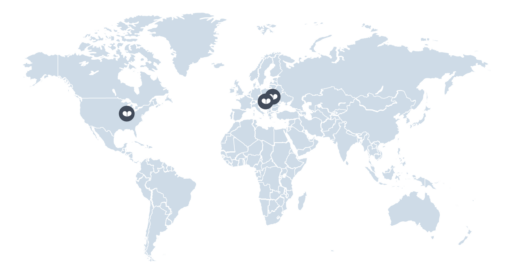Here’s the thing: Agile isn’t just a buzzword or a methodology confined to software development anymore. It’s a mindset, a culture that’s increasingly being adopted across various domains, including marketing.
It comes as no surprise. Agile principles focus on flexibility, customer satisfaction, collaboration, and continuous improvement: and all these qualities are something to look for in modern marketing teams.
So, how do we integrate key Agile principles into marketing strategies and make them work in cross-functional teams? Read our blog post to find out.
What is the Agile Manifesto?
The Agile Manifesto emphasizes individuals and interactions over processes and tools, working solutions over comprehensive documentation, customer collaboration over contract negotiation, and responding to change over following a plan.
The Agile Marketing Manifesto guides teams to prioritize flexibility, open communication, and customer needs, which are crucial for the dynamic nature of marketing that we all experience.
A Brief History of the Agile Manifesto
In February 2001, seventeen software developers met at The Lodge at Snowbird in Utah. They discussed new ways to develop software that were lighter and more flexible than the traditional methods. This group included people who supported different methodologies, like Extreme Programming and SCRUM.
All of them wanted to find a common approach that focused more on people and less on rigid processes.
Their discussions led to the creation of the Agile Manifesto.
This important document highlighted the value of individuals, working software, customer collaboration, and adapting to change. They also formed the Agile Alliance to spread these ideas further.
The Agile Manifesto has had a big impact on how software is developed around the world. It encourages developers to be more adaptable and responsive – but has also started to make its mark in marketing and business.
Key Agile Principles in Marketing

#1 Satisfy Customers Through Early and Continuous Delivery
Agile marketing teams excel when they put customer satisfaction at the forefront, delivering valuable insights and campaigns early and often. Borrowing from the agile software development playbook, the focus shifts to quickly meeting customer needs with precision.
For instance, an agile marketing team might roll out a digital campaign in phases, analyzing customer reactions and engagement to refine and improve in real time. This iterative process contrasts sharply with traditional marketing’s “set and forget” strategy, and stands in stark contrast to traditional marketing’s one-shot efforts.
Agile methodologies empower marketing departments to harness change, making them more adaptable and responsive. Collaboration across functions – marketing, tech, customer service, or even board members if necessary – ensures a comprehensive understanding of customer desires.
Implementing agile marketing means embracing a cycle of constant improvement, guided by clear key performance indicators (KPIs). Marketing departments that adopt agile practices transform their workflow, and align closely with the agile philosophy of frequent, focused deliveries. This strategy does not only boost marketing’s responsiveness, but also cultivates a culture where customer-centric collaboration is the norm. Which, in turn, leads to higher impact.
#2 Welcome Changing Requirements Even Late in the Project
Agile marketing teams thrive on their readiness to adapt to new requirements, even when changes come unexpectedly late in a campaign. For regular marketing teams, it’s a disaster. But in agile teams, this comes as a distinct advantage.
Imagine a campaign well underway when suddenly, fresh insights or trends surface. Agile marketers view this not as a hurdle but as a chance to refine and boost their campaign’s relevance and effectiveness. Marketing projects are fluid, evolving to better connect with audiences as their needs and expectations shift.
Adopting this flexible mindset turns potential disruptions into opportunities for creativity and growth. Each Agile team has to maintain open, clear communication, with every member and stakeholder on board with any new directions.
Welcoming changes, even at advanced stages, positions agile marketing teams to craft campaigns that are both adaptive and strategically advantageous. This moves marketing beyond a fixed-plan framework to a dynamic, customer-driven practice, set in a landscape that values agility and ongoing optimization.
#3 Deliver Value Frequently
Agile marketing teams focus on getting valuable results out quickly, often taking cues from agile software development. They aim to deliver impactful marketing actions in short bursts, rather than waiting for big, long-term campaigns. Shorter timescales is what they prefer, and what helps them adjust fast based on what customers say they want or need.
For example, if a social media tactic isn’t hitting the mark, the team can pivot without losing much time or resources. Such agility gives companies a sharp edge so they’re always ahead in the game.
Agile teams work together to stay nimble, listening to feedback, and improving constantly. This way, marketing doesn’t just talk at customers; it listens and adapts, keeping them engaged and interested.
#4 Break the Silos of Your Project
Agile marketing teams champion the idea of breaking down silos within projects, pushing for daily collaboration between business folks and developers, among other key stakeholders.
This approach guarantees that everyone involved – be it in strategy, content creation, or tech development – shares insights and feedback from day one.

For instance, if the product marketing team is looking to launch a webinar series aimed at existing customers, talking to the customer success team will help them choose the best topics and speakers.
This teamwork doesn’t just speed up the process but enriches the project with diverse perspectives, leading to outcomes that truly resonate with the audience. In Agile, every team member feels valued and heard. Agile marketing teams can deliver projects that are timely and fully aligned with customer needs and business goals – also by breaking the silos.
#5 Build Projects Around Motivated Individuals
Provide the environment and support needed, and trust them to get the job done.
Agile marketing thrives when projects are built around motivated individuals. It means providing the right environment and support and then trusting the team to deliver exceptional results. It’s a core principle that agile marketing departments embrace, as they recognize that the key to success lies in leveraging the creativity and drive of each team member.
For example, when agile marketing teams work on promoting a new app feature or launching a campaign, they rely on the agile mindset that highlights the frequent delivery of valuable outcomes. Instead of working on a big-bang campaign, they launch several smaller campaigns and iterate based on the results.
Agile processes empower teams to make decisions and take actions that directly contribute to the customer’s competitive advantage. With agile marketing practices and frameworks, marketing departments can transform their operations and be more flexible and responsive to changes.
#6 The Most Effective Way of Communication is Face-to-face
In agile marketing implementation, nothing beats the clarity and immediacy of face-to-face communication. This method stands out as the most efficient way to share ideas, solve problems, and make decisions quickly within development teams.
Agile marketing starts with the dynamic exchange that happens when team members, from software developers to marketing professionals, gather in the same room. With face to face conversation opportunities, cross-functional teams can simply work better.
This direct interaction allows for a deeper understanding, builds trust, and accelerates the agile marketing process. For agile software development teams tasked with delivering working software frequently, the nuances of in-person conversations can make all the difference in ironing out complexities and aligning objectives. The same goes for agile marketing teams having to deliver social media content that picks up on current trends, for example.

In an agile marketing department where agile marketing frameworks guide the creation and execution of projects, the ability to quickly adapt and tackle change is one of the core values. Face-to-face meetings make each agile marketing team extremely powerful.
#7 Working Software is the Primary Measure of Progress for an Agile Marketing Team
Agile processes harness change – and this applies to overall progress, too. Let’s take the tech industry as an example. In tech, the clearest indicator of progress isn’t a checklist of tasks completed or hours logged. It’s the delivery of working software.
This principle, central to both agile software development and agile marketing, shifts the focus from traditional metrics to tangible outcomes that directly benefit the user and allow teams to deliver working software frequently.
Building on this principle, agile teams prioritize features and updates that directly improve user experience or solve specific problems.
In practice, this could mean an agile marketing team closely monitors how users engage with the initial version of the app, gathering insights through direct feedback channels, social media, and in-app analytics. These insights inform the development team’s priorities for subsequent releases so that every update delivers added value to the users.
This Agile approach accelerates the time to market and ensures that the product evolves in direct response to user demands. It’s a huge contrast to the traditional method of spending months or even years perfecting a product without real-world user input – only to find upon release that user needs have shifted or weren’t fully understood so the development team wasted their time.
#8 Maintain a Sustainable Working Pace
In agile marketing, the goal is to work smart, not hard – so that the team can sustain their pace without hitting a wall. Think of it as avoiding the crash-and-burn that comes from sprinting too hard. Agile processes promote sustainable development and maintain a constant pace.
Let’s take a look at just one example: optimizing a website for better user engagement. Instead of overhauling the entire site in one go, an agile team tackles it piece by piece.
They might start with the homepage, testing new layouts, and then move on to update the product pages based on user feedback and analytics. This way of adopting Agile marketing allows for continuous improvement without overwhelming the team.
By working in these focused, manageable chunks, the team can stay on top of their game, creatively solving problems and implementing solutions that really hit the mark. The energy level is high, the ideas are flowing, and everyone can keep up with sustainable development.
#9 Continuous Excellence Enhances Agility
Agile marketing aims for excellence in every aspect, from leveraging cutting-edge technology to crafting compelling designs. This focus on quality allows for marketing agility. Starting with a commitment to high standards sets the stage for success and enables a responsive and flexible strategy for market challenges.

In developing a new email campaign, for instance, prioritizing clear messaging and engaging design from the outset is what matters the most. This isn’t just about aesthetics but connecting with the audience on a meaningful level. Good design enhances agility and brings the team closer to technical excellence.
Also, such a detailed focus allows teams to quickly identify what resonates with their audience and adjust as needed, all without starting from scratch.
Agile marketing is characterized by a continuous cycle of learning and improvement. Each project or campaign offers valuable insights, which are then used to optimize future efforts.
#10 Simplicity is Essential
They say less is more, and they are actually right.
In agile marketing, simplicity reigns supreme. The mantra here is to cut through the clutter and focus on what genuinely moves the needle. It’s about asking, “What can we stop doing?” to free up resources for the initiatives that truly matter.
Take, for example, a marketing team gearing up for a new product launch. Instead of spreading their efforts thin across every available channel, they zero in on where their audience actually hangs out – maybe it’s Instagram and email. This choice to simplify doesn’t just save time. It actually amplifies their message where it counts.
And this streamlined approach is what the Agile Marketing Manifesto is all about. It advocates doing less to achieve more so that every task is purposeful and impactful.
Simplicity in agile marketing means campaigns hit harder, messages are clearer, and teams aren’t blocked by unnecessary work – and this is how the agile methodology is transforming marketing teams.
#11 Self-organizing Agile Marketing Teams Generate Most Value
Self-organizing teams are empowered to make decisions and take action. They often produce the best architectures, requirements, and designs. It’s a dynamic where the collective intelligence and creativity of the group lead to innovative solutions and valuable software.
In this setup, a scrum team, guided but not micromanaged by a scrum master, navigates through projects with a level of autonomy that traditional marketing setups rarely allow. This freedom promotes continuous attention to detail, adaptability, and a commitment to maintaining a constant pace indefinitely.
For instance, when a self-organizing team tackles a new marketing campaign, they leverage their diverse skills and perspectives to identify the most effective strategies and channels. Every aspect of the campaign is scrutinized and optimized, from the initial concept to the final execution.
#12 Regularly Reflect and Adjust Your Way of Work to Boost Effectiveness
In the Agile Marketing Manifesto, the path to peak effectiveness is paved with regular reflection and strategic adjustments. Agile marketers take time at set intervals to look back on their processes and outcomes, asking themselves how they can work smarter, not harder. This practice is a core of the Agile mindset, as it encourages a culture of continuous improvement that’s deeply embedded in Agile methodologies.
Within the marketing department, this might look like a monthly review session where the team evaluates the successes and challenges of recent marketing campaigns. They analyze what worked, what didn’t, and how they can leverage customer feedback more effectively. It’s a time for open, honest discussion that strengthens team cohesion and sharpens their strategic focus.
Agile marketing works and breathes feedback. When a team reflects on its performance or prepares an Agile marketing report full of meaningful data, it allows all Agile marketers to improve.
Key Takeaways
- Agile marketing shifts the focus from traditional, plan-heavy approaches to a more flexible, responsive strategy that prioritizes customer satisfaction and rapid adaptation to change.
- The Agile Manifesto emphasizes individuals and interactions, working solutions, customer collaboration, and responsiveness to change, guiding teams to prioritize flexibility and open communication.
- Agile marketing teams succeed by delivering valuable insights and campaigns early and often, directly addressing customer needs and fostering a culture of continuous improvement.
- Agile teams excel in their readiness to adapt to new requirements, even late in a project, viewing changes as opportunities to increase campaign relevance and effectiveness.
- By delivering impactful marketing actions in short bursts, agile marketing teams can quickly adjust strategies based on customer feedback, maintaining a competitive edge.
- Agile marketing encourages daily collaboration across functions, providing a comprehensive understanding and alignment of customer desires from the start of a project.
- Agile marketing thrives by building projects around motivated individuals, providing the environment and support needed, and trusting the team to deliver exceptional results.
- Agile marketing simplifies processes, focusing on what truly matters to free up resources for initiatives that significantly impact customer engagement and satisfaction.
- Agile teams regularly reflect on their work processes and outcomes, making strategic adjustments to boost effectiveness, and ensuring that marketing efforts are always evolving and improving in alignment with agile marketing frameworks and core values.
Conclusion
Does agile marketing work? Absolutely. Many marketing teams have seen remarkable success by adopting agile methodologies. It’s your turn to adopt an agile marketing manifesto in your marketing team. Are you ready?










